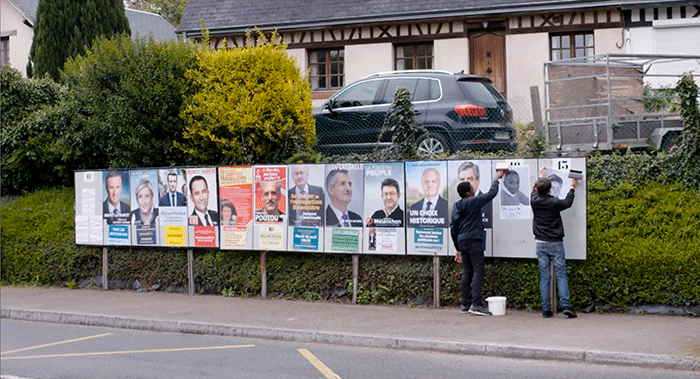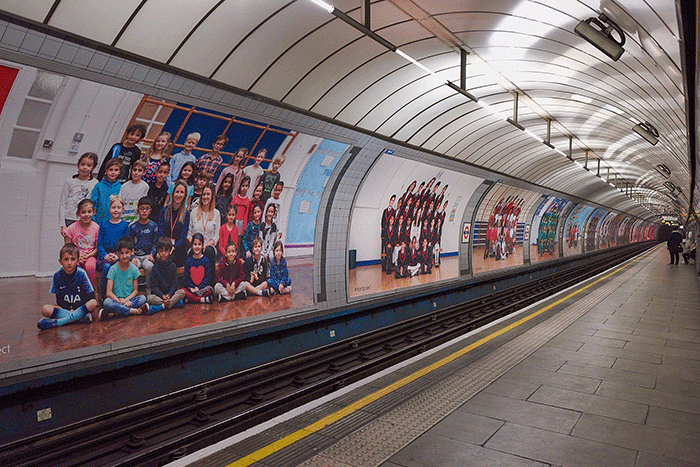A curator friend says that anyone who decides to have children today is a climate-change denier. He’s joking – but only a little. More than ever, people are opting out of parenthood. Some cite environmental crises, others downward mobility or political doom: according to the anti-natalist philosopher David Benatar, life is so full of suffering that forgoing procreation is an act of compassion. Many feel differently, of course.
Either way, one thing is certain: the contested figure of the child carries the weight of our uncertain future. This has not been lost on artists who turn to children – vulnerable and guileless, untouched by cynicism and resignation – to confront the question of whether or not a better world is possible. After a spate of books, artworks and exhibitions on the theme of motherhood, recent works by Steve McQueen and Éric Baudelaire depart from considerations of the experience of raising one’s own child to consider the shared responsibility that we, as a society, bear towards those destined to inherit our mess.
At the London Overground station near my house, 54 young faces stare out from a diptych of bill- boards, part of McQueen’s Year 3 (2019) project. Adopting the standard format of the class portrait, the British filmmaker dispatched a team from Tate to photograph some 76,000 pupils at London’s schools, with the portraits displayed as a gridded installation at Tate Britain and as posters around the city. This delegation feels a bit easy, but the lack of personal involvement also fits: the proprietary claims of parenthood are nowhere to be found. Critics have lauded Year 3 for its scale, optimism and celebration of diversity. To this, I would add the merit of framing London’s children as a matter of collective concern.

McQueen’s 76,000 levy a silent demand for socialised care, a demand they may not even know is theirs. Yet passing the billboards almost every day, during the tumult of an election campaign, I began to feel the limitations of the photographs’ fixity and formality with increasing force. Sameness won out over difference. The class portraits resemble the seven- and eight-year-olds they depict in physical likeness alone, too bound by their mimicry of institutional protocol to capture anything of the children’s protean existence, their thoughts, gestures, hopes or fears.
As a contrast, I recall Smadar Dreyfus’s immersive installation School (2009–11), shown at the Folkestone Triennial in 2011. In dark rooms, audio recordings of Israeli classrooms are heard, translated into white text appearing on black screens. Across lessons in citizenship, geography and other topics, the visitor grasps how the school functions as a lively site for the production of subjectivity, marked equally by indoctrination and resistance. To make No Ordinary Protest (2018), recently nominated for the Jarman Award, Mikhail Karikis worked with London school-children, fusing the power of make-believe with a reflection on environmental crisis. The children share their thoughts on caring for the planet and collaborate on an adaptation of Ted Hughes’s 1993 science-fiction novel The Iron Woman, in which the titular figure takes vengeance on humans for their destructive ways. Dreyfus observes; Karikis participates. Both, however, approach children who are not their own as political beings in the making; both use time-based media to capture the flows of becoming.
These objectives are at the heart of Baudelaire’s feature-length film Un film dramatique (2019), the centrepiece of the artist’s Prix Marcel Duchamp-winning exhibition at the Centre Pompidou last year and on view in the Deep Focus section of this year’s International Film Festival Rotterdam. Baudelaire worked with Parisian middle-school students for four years, filming them – and, crucially, giving them opportunities to represent themselves and their lives – through a period of immense change. Un film dramatique reactivates the Godardian axiom that ‘the problem is not to make political films, but to make films politically’ by pursuing collaboration with, and durational commitment to, its subjects. The students consider what kind of film they want to make; they discuss identity, terrorism, daily life. They are not merely someone’s offspring and not blank slates, either. They are not mute witnesses to the events of adults, as were the child-seers of Italian neorealism. They are agents in their own right, inheritors of the world. Baudelaire shares McQueen’s interest in portraying the child far from the reproductive logic of the nuclear family, within the frame of political community. But where Year 3 imposes a template, the form of Un film dramatique is without predetermination, shaped in response to the students’ own images and concerns. If the child is a promise of futurity and transformation, of a world different and better than our own, Baudelaire’s film takes after its subjects, maintaining an open horizon and a desperately needed hope.
Erika Balsom is a writer and lecturer in film studies and liberal arts at King’s College, London. She has a regular column in ArtReview, in which she writes about the moving image outside the gallery
From the March 2020 issue of ArtReview
